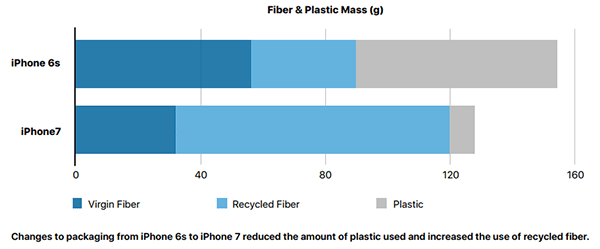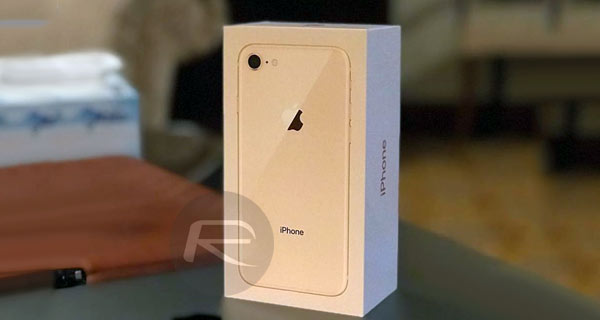Apple has long been a company at the forefront of trying to reduce the impact that building, shipping and then selling its devices around the globe has on the environment.
That is driven home every time a new device is unveiled by the company, with there always being a slide during which the new hardware’s environmental credentials are lauded.

Now Apple has released a white paper in which it outlines some of the changes it has made to its iPhone product packaging in an attempt to better serve the environment. According to Apple’s white paper, titled Apple’s Paper and Packaging Strategy, there were three main targets Apple reached for when designing its packaging with an eye towards preventing further impact on the environment.
1. Reduce Apple’s impact on climate change by using renewable energy sources and driving energy efficiency in products and facilities.
2. Conserve precious resources by using materials efficiently, using more recycled and renewable content in products, and recovering material from products at the end of their life.
3. Identify, develop, and utilize safer materials in our products and processes.
The steps that it took to try and achieve those aims are quite astonishing. For example, by using a new type of fiber-based material when building the trays iPhones ship in rather than the petroleum-based plastic used previously, as well as using paper and cardboard to house EarPods rather than the plastic that came before, Apple was able to achieve an 84 percent decrease in plastic usage for iPhone 7 packaging compared with iPhone 6s.

That number is impressive on its own, but when you consider how many iPhones are sold each year that amounts to quite the reduction in plastic that is being moved around just to sell an iPhone.
Finding a fiber alternative proved challenging since fiber naturally expands and contracts with changes in humidity. The significant number of suppliers and locations through which the power adapter wrap would pass made controlling the humidity of the environment impossible. This required Apple to take a very hands-on approach, working directly with the supplier to alter aspects of the manufacturing process to create a fiber wrap that would meet technical needs.
Apple apparently hopes that by sharing this white paper, other device manufacturers will be able to follow suit, and while Apple alone can have an impact on the environment for the better, just imagine the difference if Samsung, HTC, LG and the other large smartphone makers did the same.

You may also like to check out:
- Download MovieBox++ iOS 11 IPA On iPhone, iPad [No Jailbreak Required]
- Pokemon Go 1.47.1 IPA And 0.77.1 APK Hack Available To Download Now
- iOS 11.1 Beta 2 Changes: Check Release Notes And Changelog In Full Right Here
- Download iOS 11.1 Beta 2 IPSW Links For Compatible Devices
- Download iOS 11.0.2 IPSW Links For Your iPhone, iPad, iPod touch
- How To Downgrade iOS 11.0.2 / 11 To iOS 10.3.3 / iOS 10 [Tutorial]
- Download iOS 11, 11.0.2, 11.1 Links & Install On iPhone 8, 7 Plus, 6s, 6, SE, 5s, iPad, iPod [Tutorial]
- Jailbreak iOS 11 / 11.0.2 / 11.0.1 On iPhone And iPad [Status Update]
You can follow us on Twitter, add us to your circle on Google+ or like our Facebook page to keep yourself updated on all the latest from Microsoft, Google, Apple and the Web.

